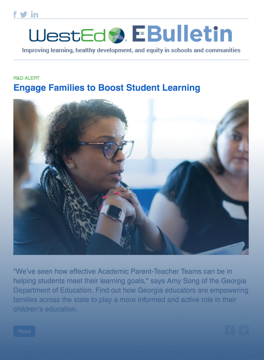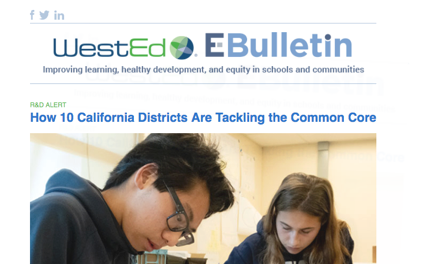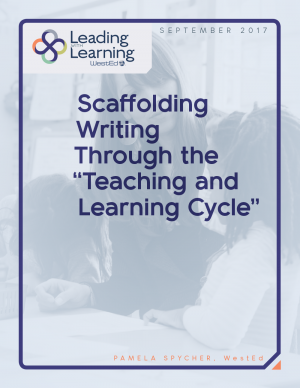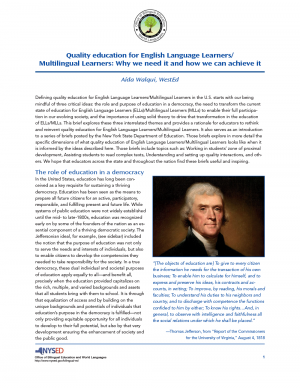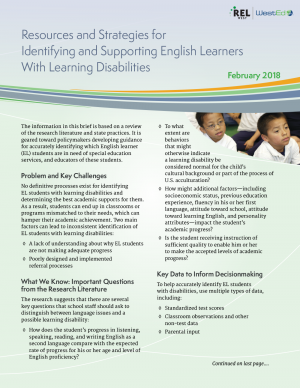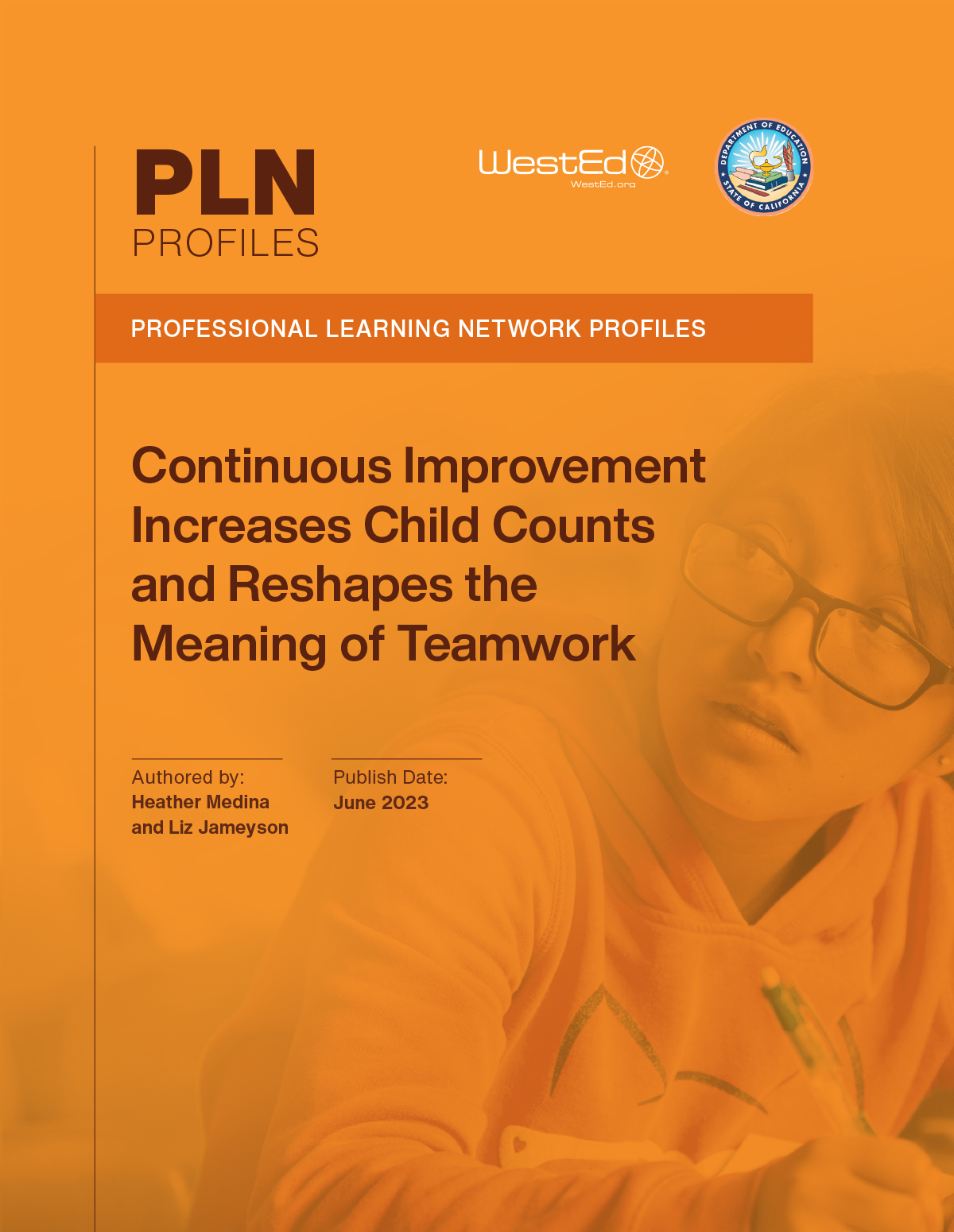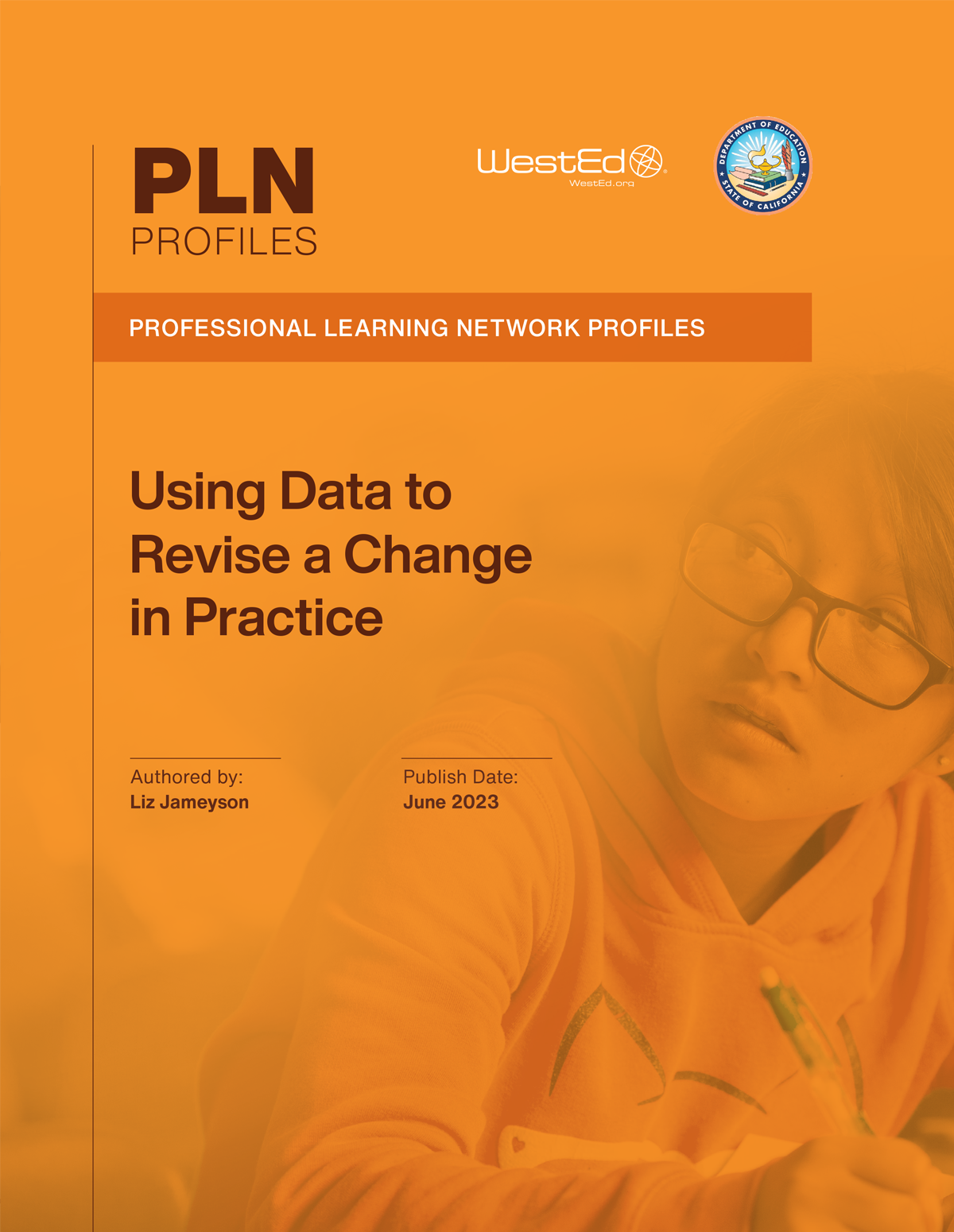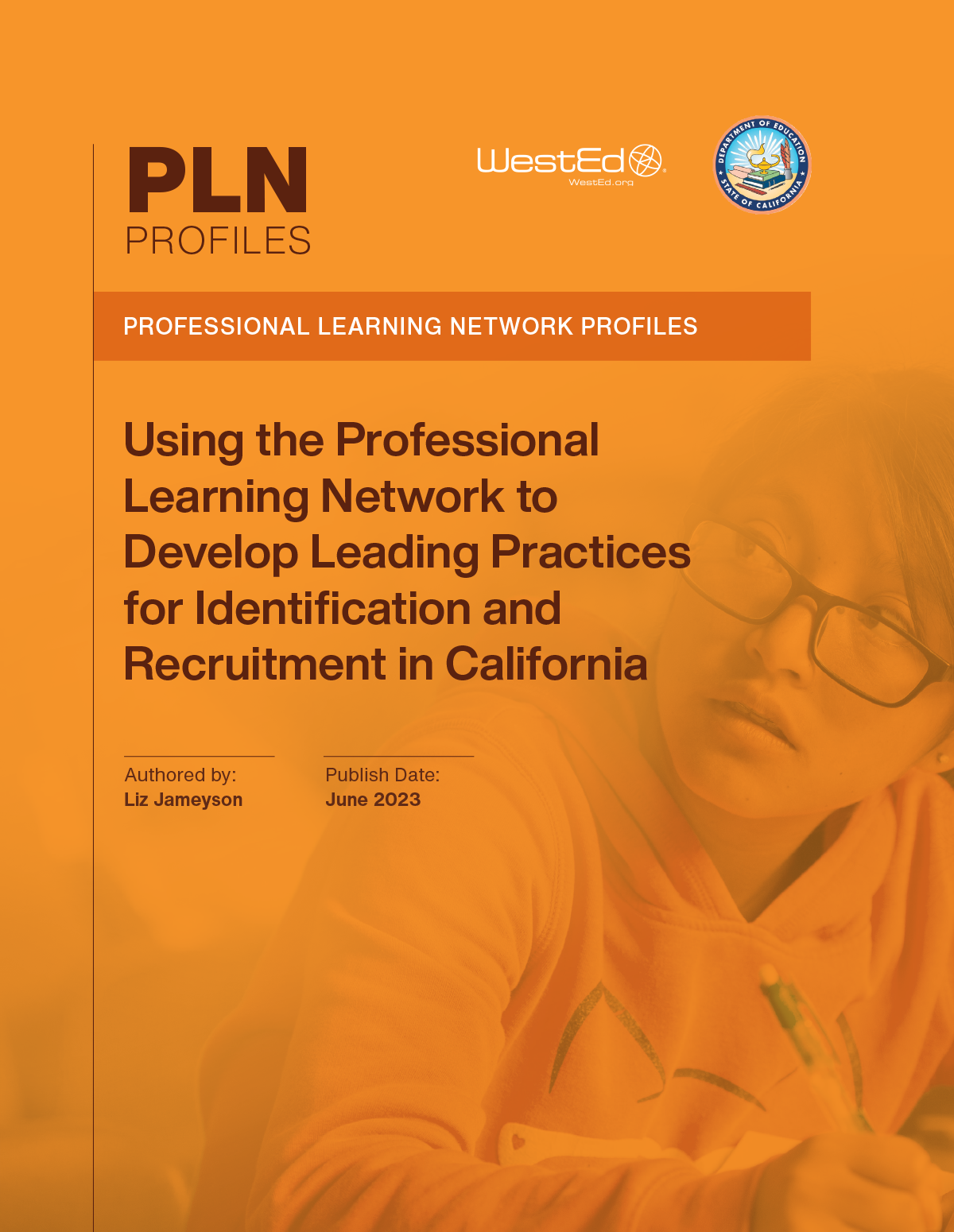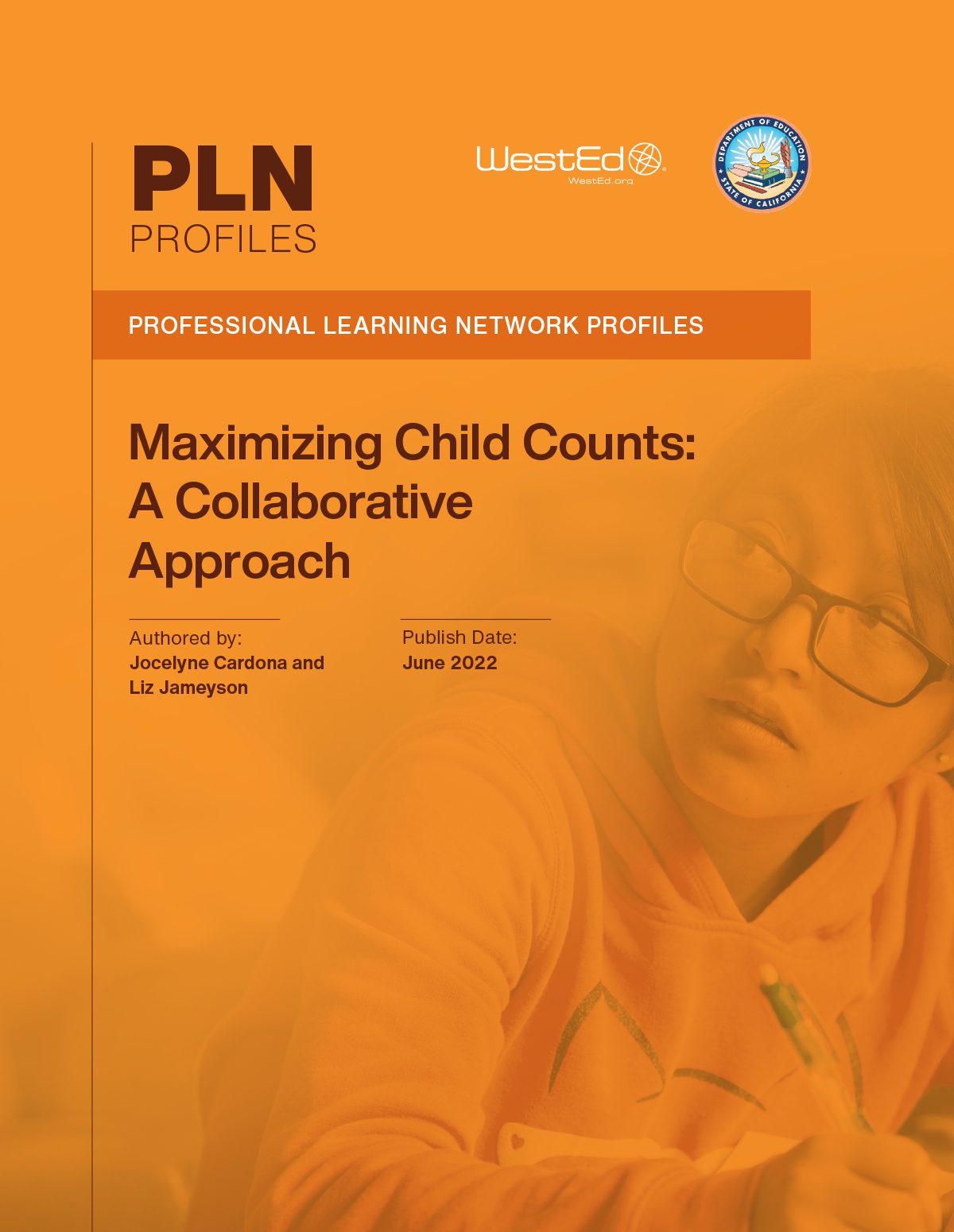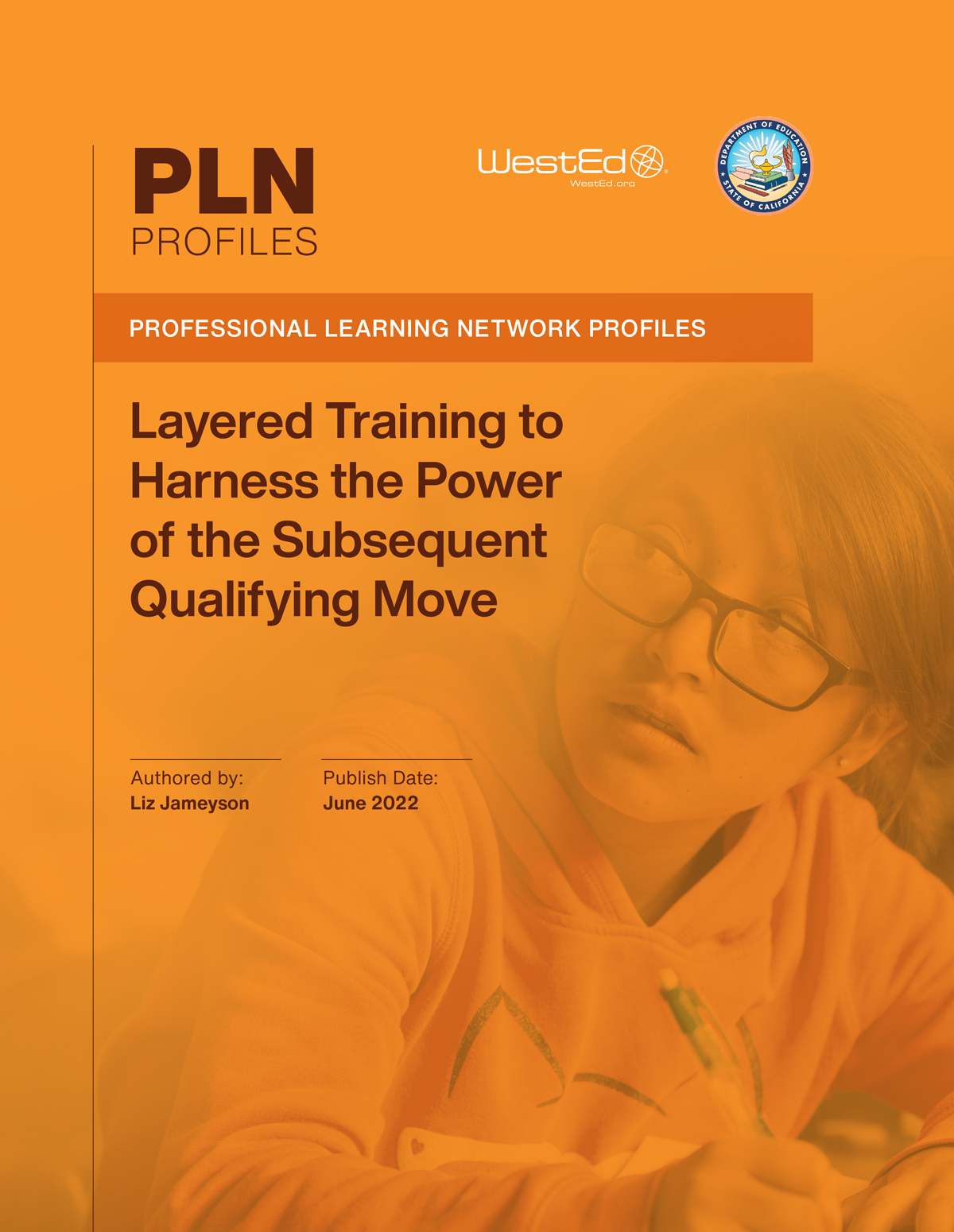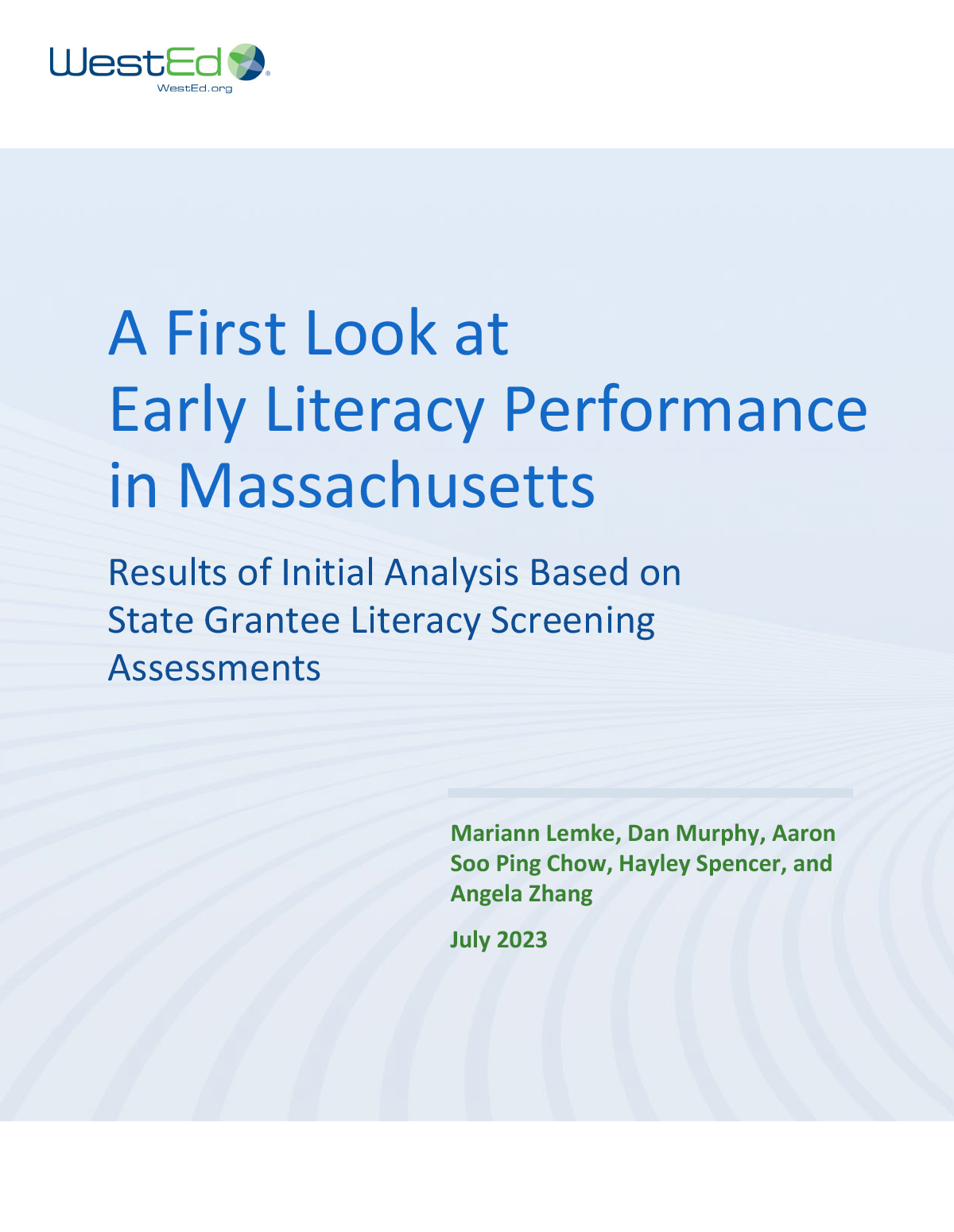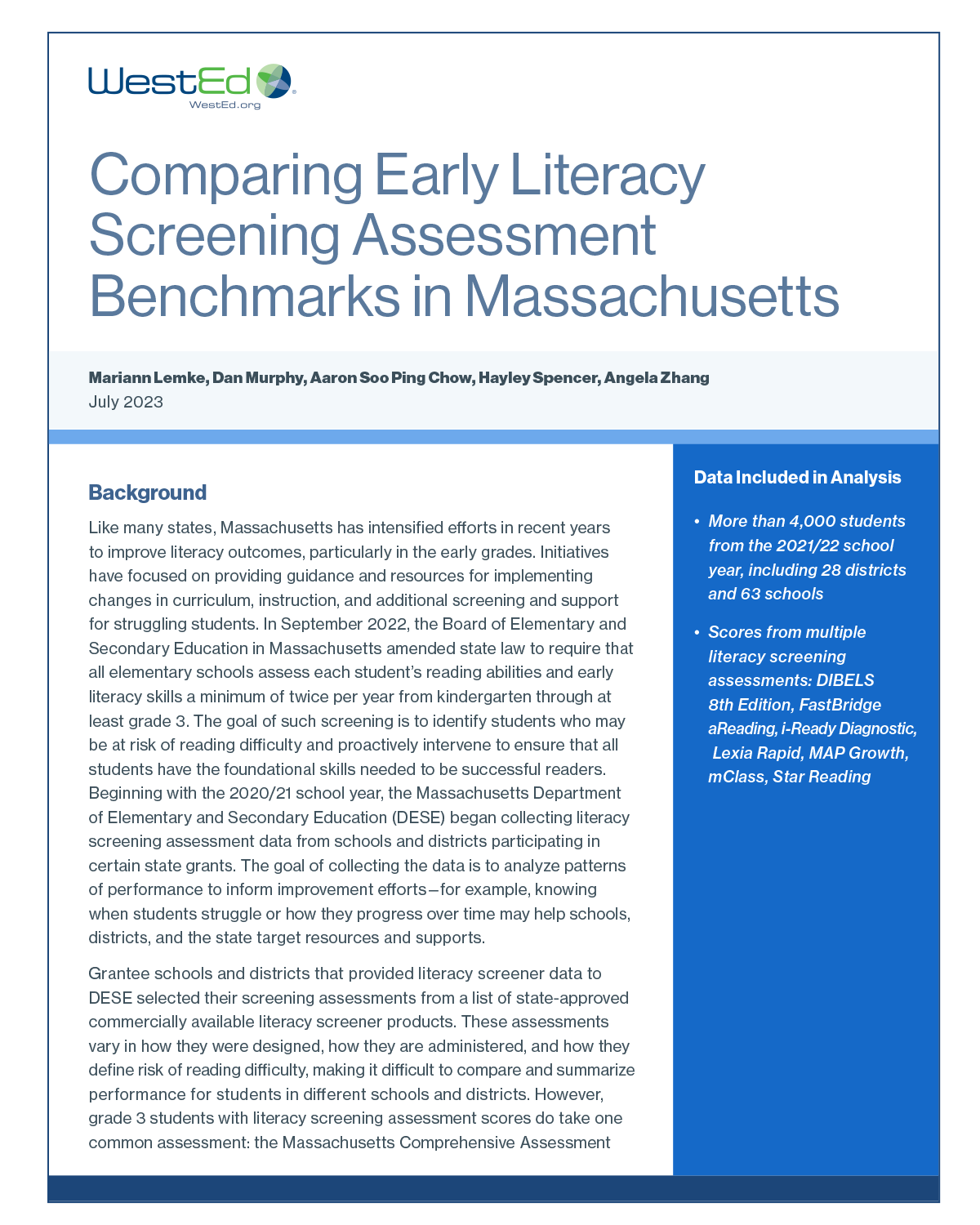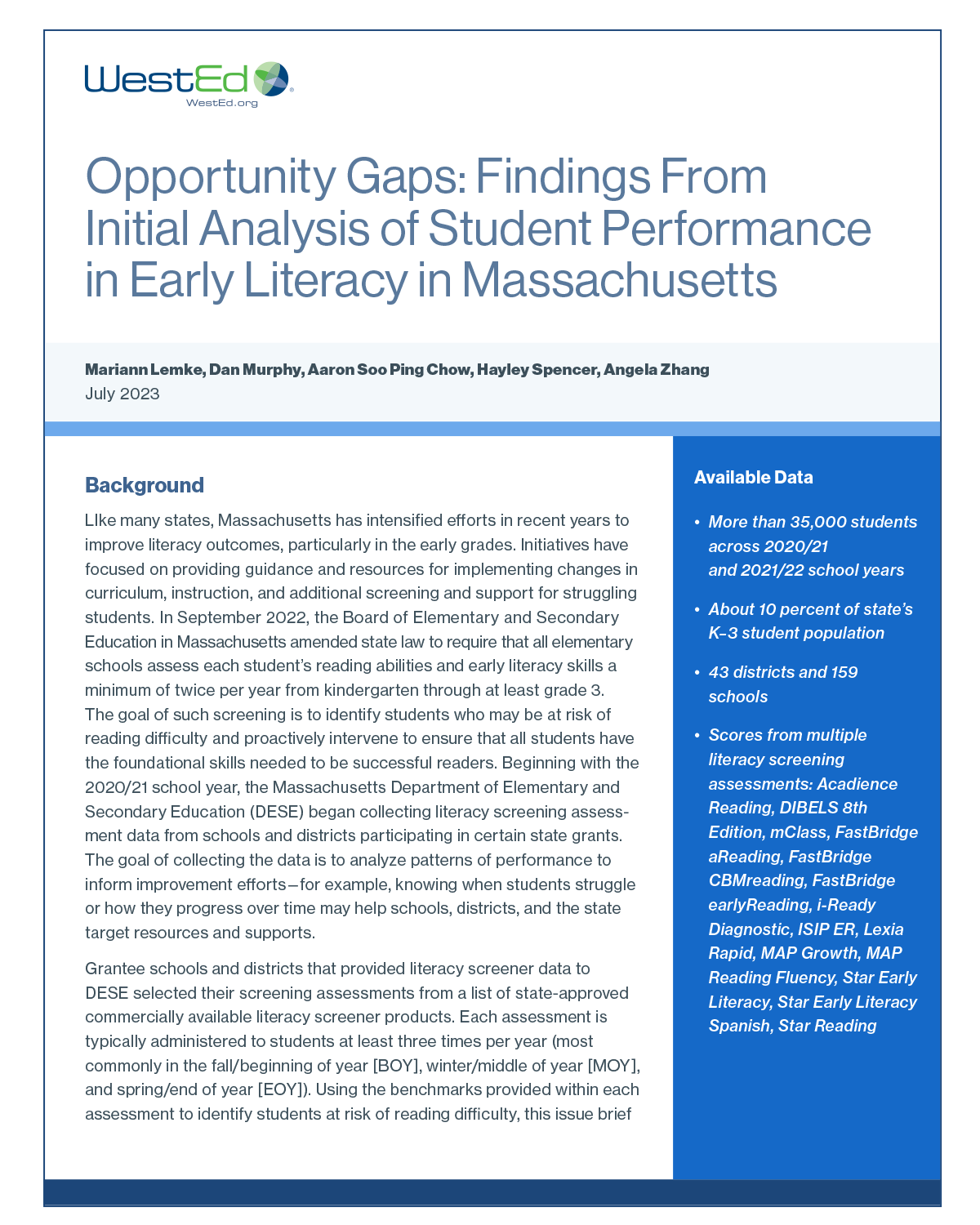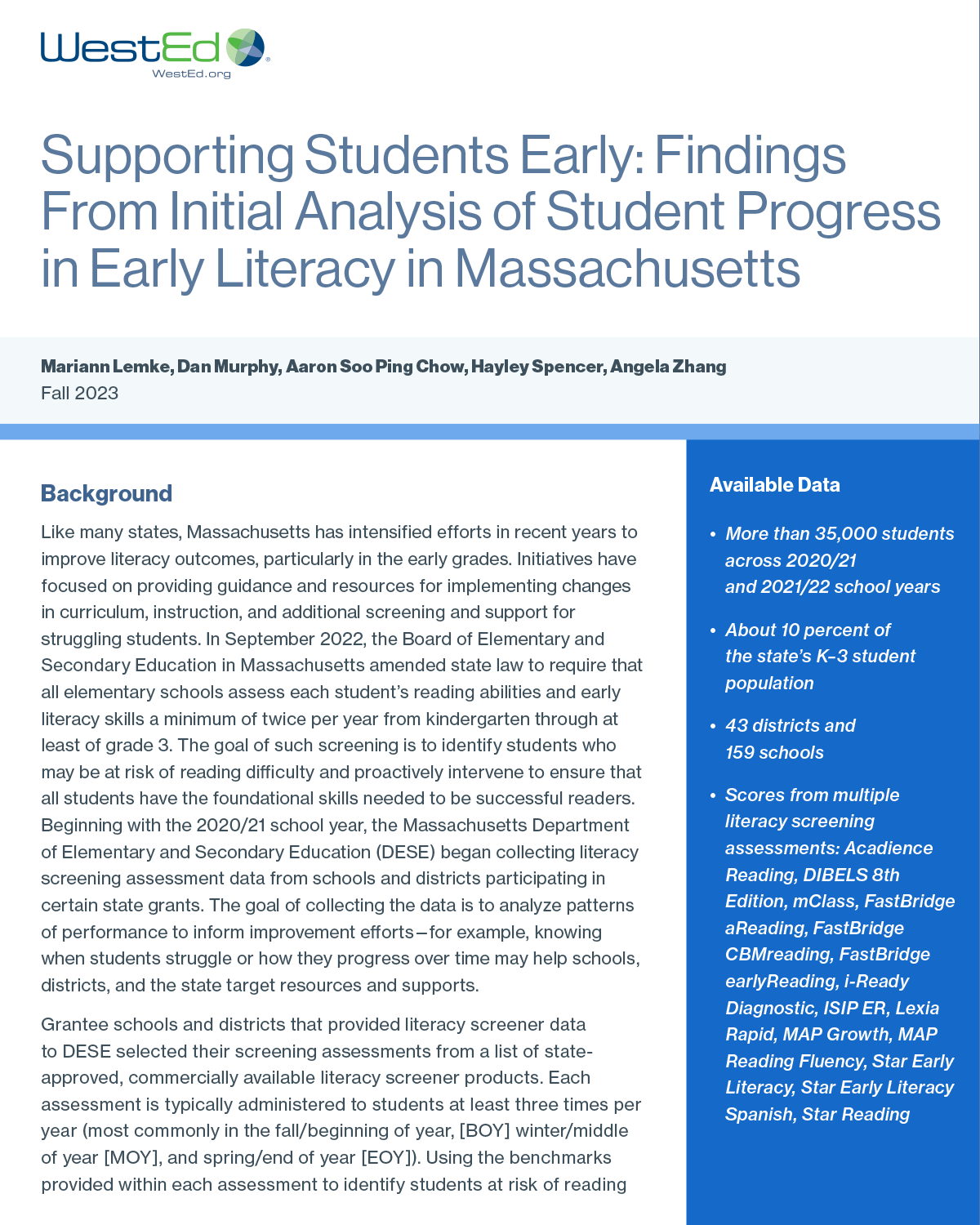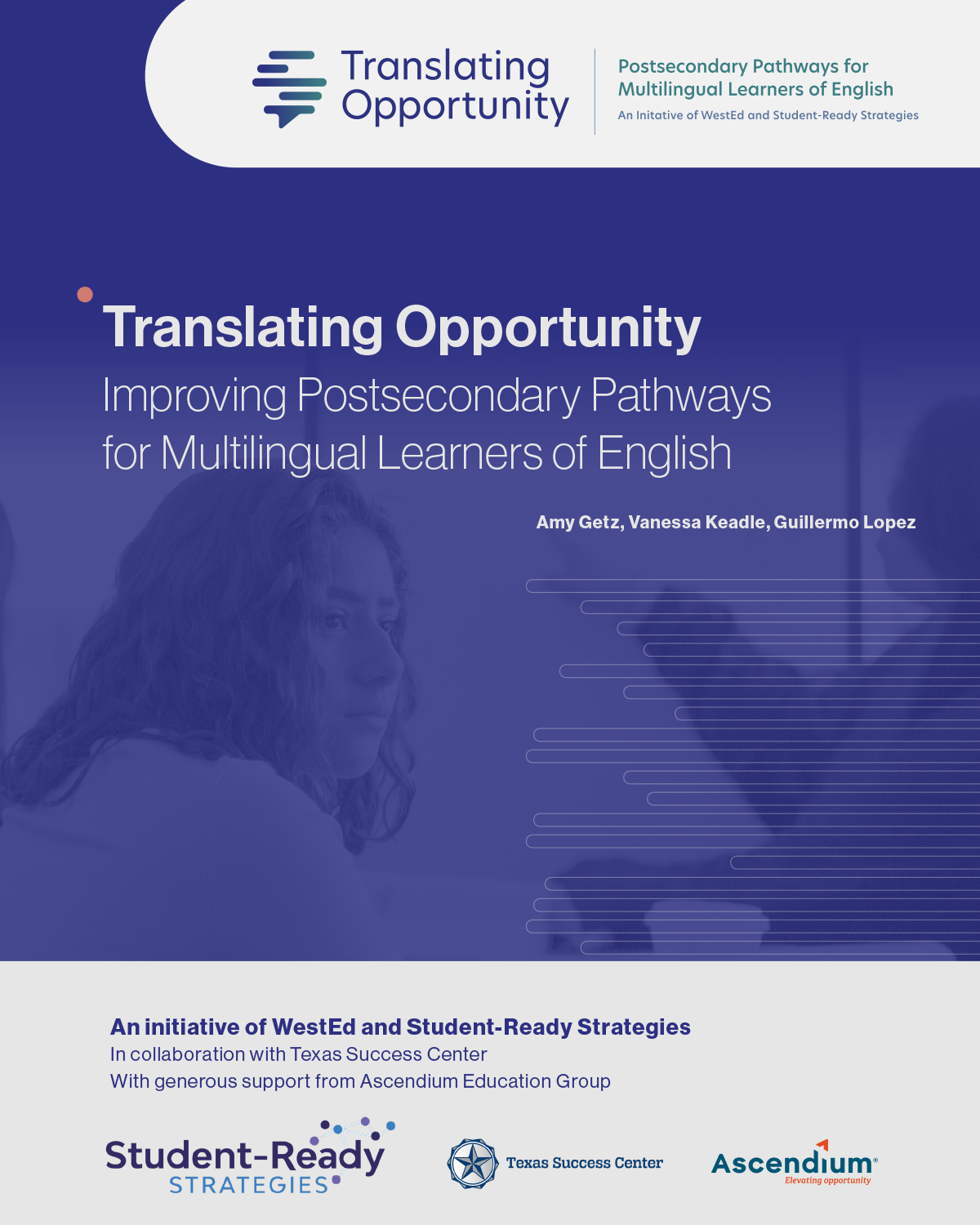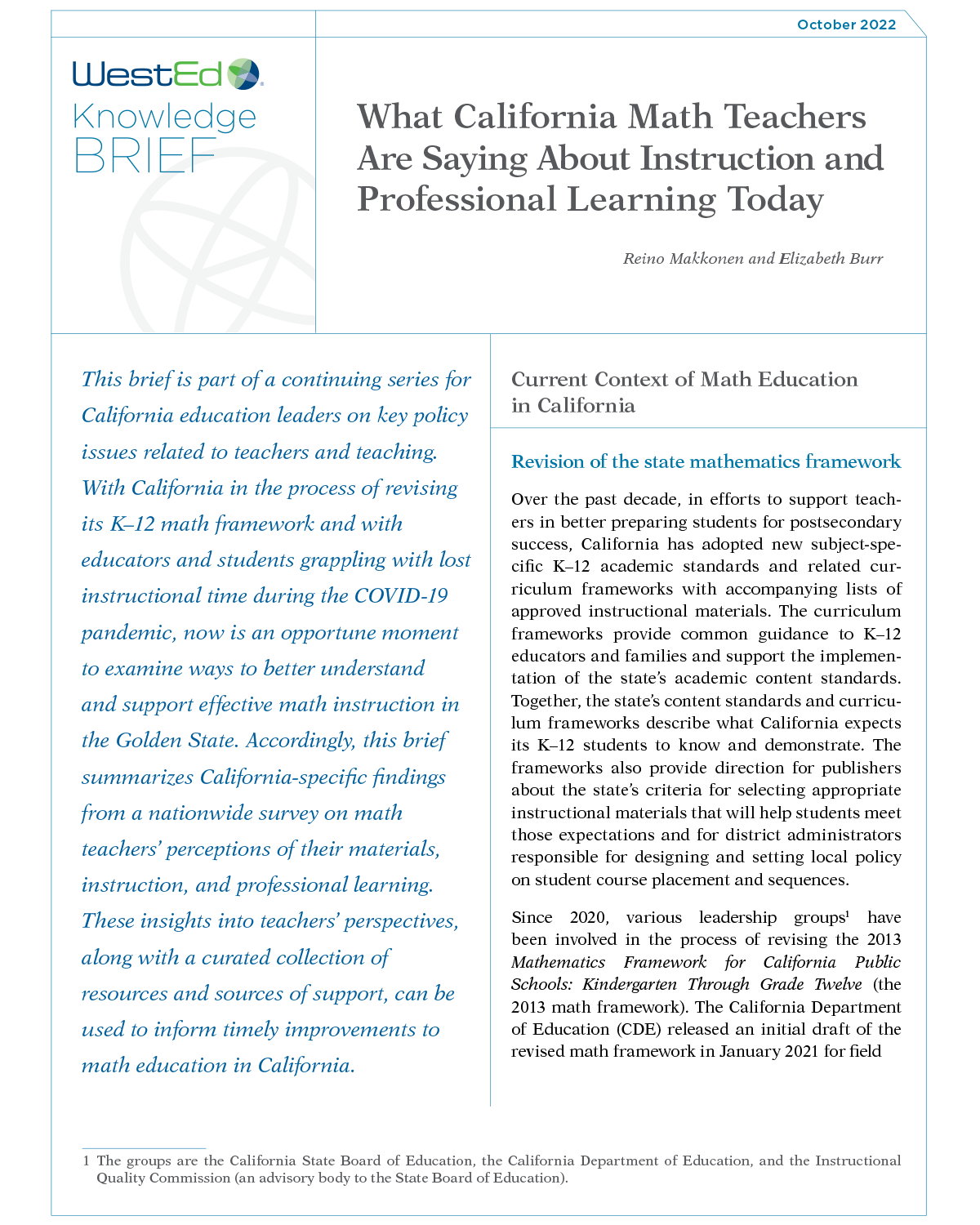English Language Learners
Scaffolding Writing Through the "Teaching and Learning Cycle"
Quality Education for ELLs/ MLLs: Why We Need It and How We Can Achieve It
Resources and Strategies for Identifying and Supporting English Learners with Learning Disabilities
Related Services
View All- Conditions for Learning and Development: Peer Collaboratives for Educational LeadersOur Conditions for Learning and Development: Peer Collaboratives for Educational Leaders offer practical resources, peer learning and networking, workshops, and direct coaching and consulting tailored to your district, regional agency, and state needs. Participants will gain innovative, strengths-based understanding of research-based strategies to promote safe and healthy conditions for learning and development so all individuals, communities, and systems can thrive.
- Psychometric Services: Research and Consultation to Ensure Assessment Results Are Reliable, Valid, and Fair
- Indicators of Distress
-
Nevada’s Asset-Based, Research-Based Approach to Supporting English Language Learners and Multilingual Learners
This brief describes the key efforts of the Nevada Department of Education (NDE) and the Region 15 Comprehensive Center to help educators use the NDE's English Language Development Standards Framework to better support English and multilingual learners.
-
The Development of Teacher Expertise in Secondary Contexts to Support English Learners: Preliminary Findings
In this webinar, researchers preview the role that diverse factors play in the development of teacher professionalism, how to navigate the complexity of supporting the development of teacher expertise, and how specific domains of teacher expertise, such as reflection and quality interactions, can guide future growth.
-
Identifying Students Closer to Their Qualifying Move Date by Utilizing an Interactive Enrollee Form
This brief in the Professional Learning Network (PLN) profiles series describes the continuous improvement work accomplished by the Merced County Office of Education Migrant Education Program to standardize a new enrollee form for consistent strategies in the identification process.
-
Continuous Improvement Increases Child Counts and Reshapes the Meaning of Teamwork
This brief in the Professional Learning Network (PLN) profiles series describes the continuous improvement work accomplished by the San Joaquin County Office of Education Migrant Program to increase the number of referrals, increasing the possibility of more children qualified.
-
Using Data to Revise a Change in Practice
This profile in the Professional Learning Network (PLN) series describes the continuous improvement work accomplished by the San Diego County Office of Education to identify families and youths closer to their date of arrival in the region.
-
Using the Professional Learning Network to Develop Leading Practices for Identification and Recruitment in California
This brief in the Professional Learning Network (PLN) profiles series describes how staff from California’s Migrant Education Program subgrantees attend two years of a professional learning network to make progress on areas of focus specific to their own data.
-
Maximizing Child Counts: A Collaborative Approach
This brief in the Professional Learning Network (PLN) profiles series describes a collaborative effort to maximize child counts to ensure that as many eligible children and youths as possible are enrolled in the MEP before the end of each performance period.
-
Layered Training to Harness the Power of the Subsequent Qualifying Move
This brief in the Professional Learning Network (PLN) profiles series describes the continuous improvement work accomplished by the Kern County Office of Education Migrant Program to increase recruiters’ use of the subsequent qualifying move to establish eligibility for migratory children.
-
Collaborative Practices for Secondary EL-Designated Multilingual Learners: National Survey Results
This was the first session of our webinar series, Where the Evidence Leads: Preliminary Findings From IES-Funded English Learner Research Studies, hosted by the National Research & Development Center to Improve Education for Secondary English Learners. In this webinar, Center researchers shared preliminary findings from a national survey designed to determine how co-teaching and collaboration vary in implementation.
-
A First Look at Early Literacy Performance in Massachusetts: Results of Initial Analysis Based on State Grantee Literacy Screening Assessments
This report provides the first-ever large-scale information about early literacy performance and progress of students in grades K–3 in Massachusetts.
-
Comparing Early Literacy Screening Assessment Benchmarks in Massachusetts
This brief describes the lack of a common definition of “at risk” of reading difficulty in early literacy screening assessments used by schools and school districts as reported in A First Look at Early Literacy Performance in Massachusetts. It also provides results of a study that links screener benchmark scores to the Massachusetts state assessment, allowing comparison of screening benchmarks.
-
Opportunity Gaps: Findings From Initial Analysis of Student Performance in Early Literacy in Massachusetts
Drawing from data collected and analyzed in the report A First Look at Early Literacy Performance in Massachusetts, this brief provides information about student literacy performance of students with different learning environments and background characteristics, including economically disadvantaged students, English learner students, students receiving special education services, Black, and Hispanic students.
-
Supporting Students Early: Findings From Initial Analysis of Student Progress in Early Literacy in Massachusetts
Drawing from data collected and analyzed in the report A First Look at Early Literacy Performance in Massachusetts, this brief provides information about student literacy performance within and across grade levels to see when most students are classified as at risk, whether or not this differs by grade level, and if students tend to stay at risk over time.
-
Translating Opportunity: Improving Postsecondary Pathways for Multilingual Learners of English
This data- and research-backed report increases understanding of postsecondary pathways for Multilingual Learners of English and addresses the challenges they encounter by investigating the policies, program structures, and practices that impact their postsecondary experiences.
-
Building Strategic Policymaking Capacity: A CA Analysis for Learning & Engagement (CALE) Collection
This resource collection provides education leaders with an in-depth analysis of key policy issues related to teachers and teaching.
View More

Stay Connected
Subscribe to the E-Bulletin and receive regular updates on research, free resources, solutions, and job postings from WestEd.
Your download will be available after you subscribe, or choose no thanks.
